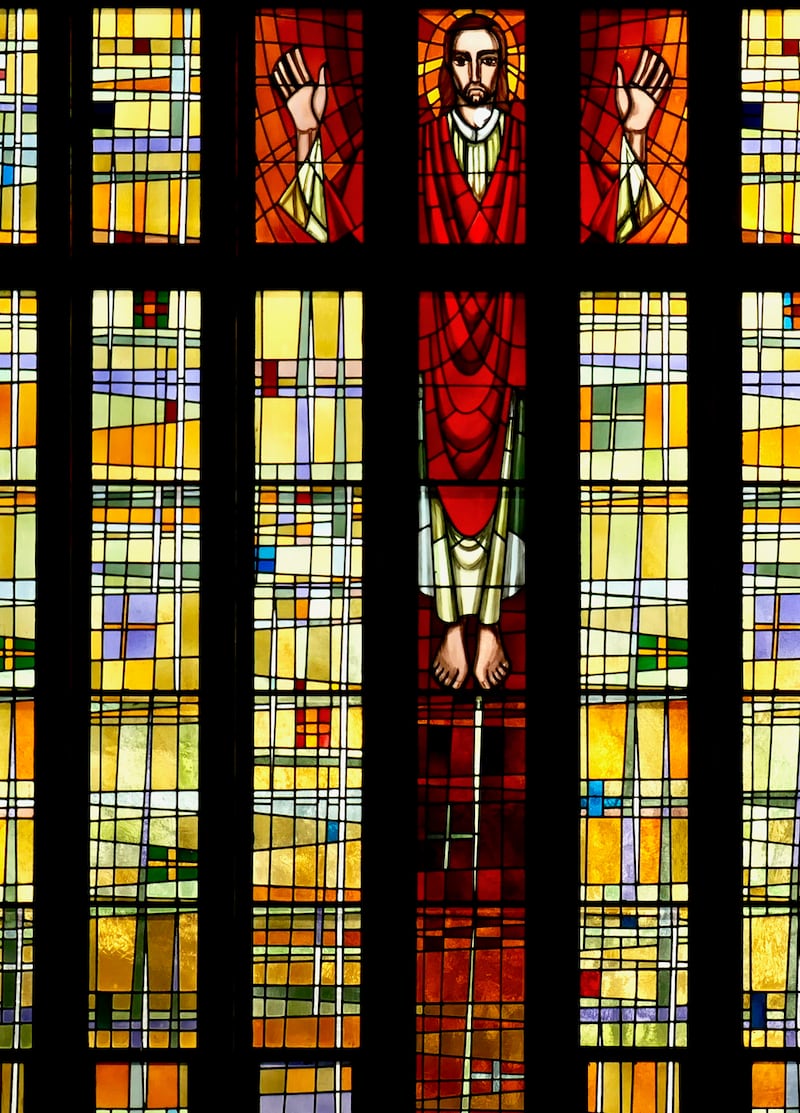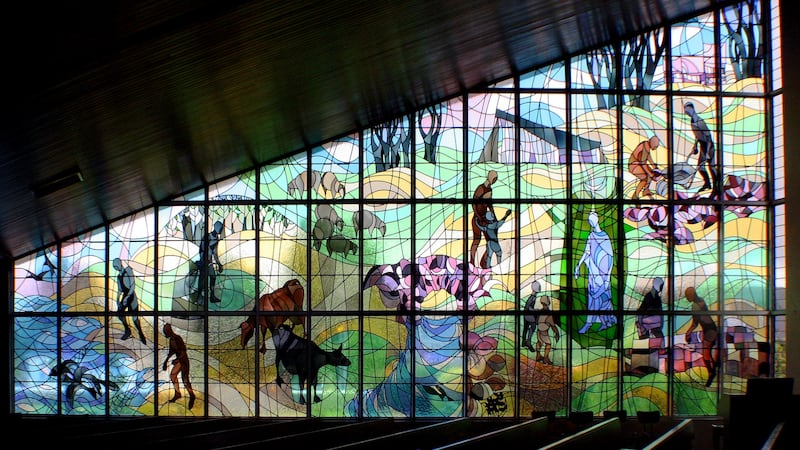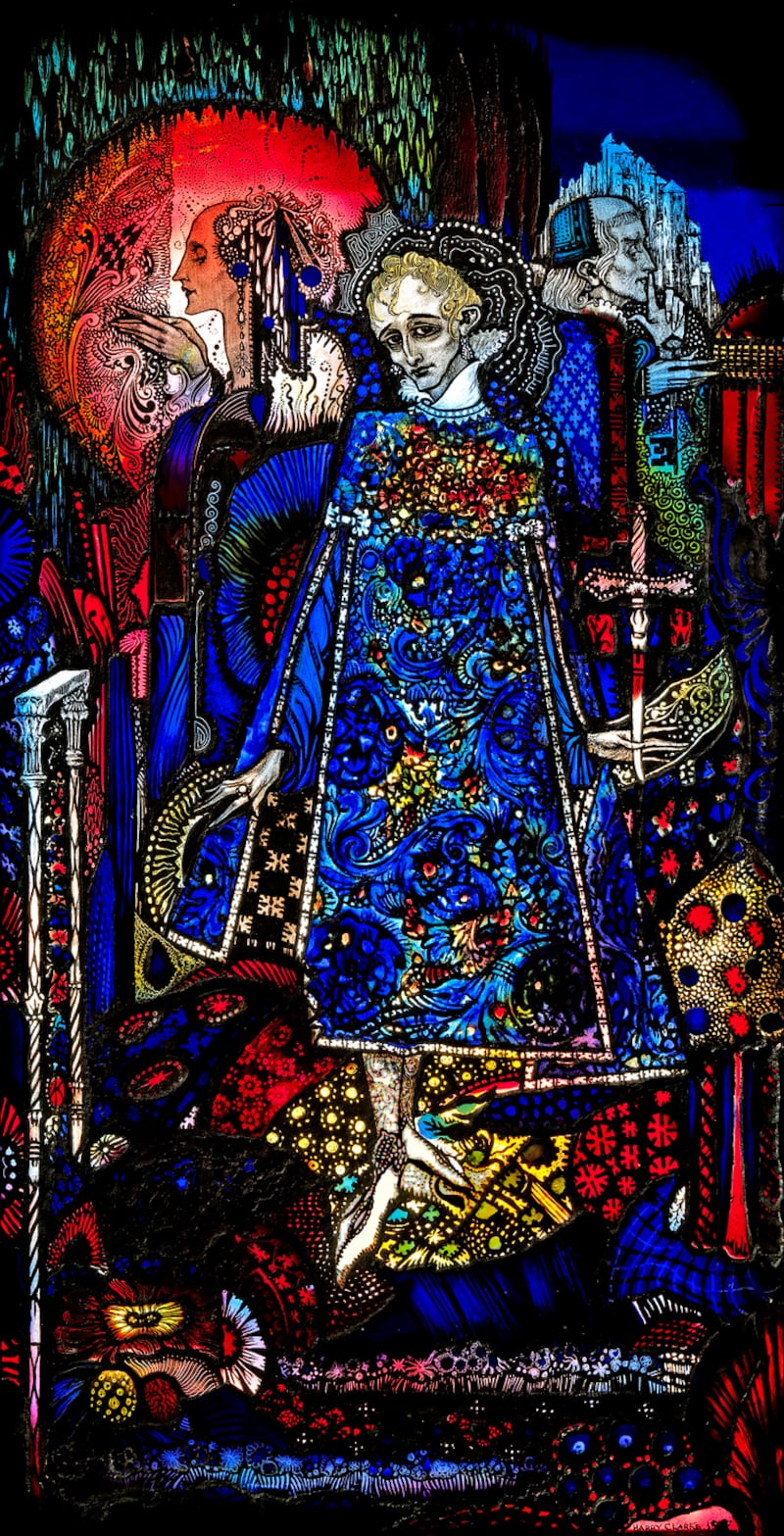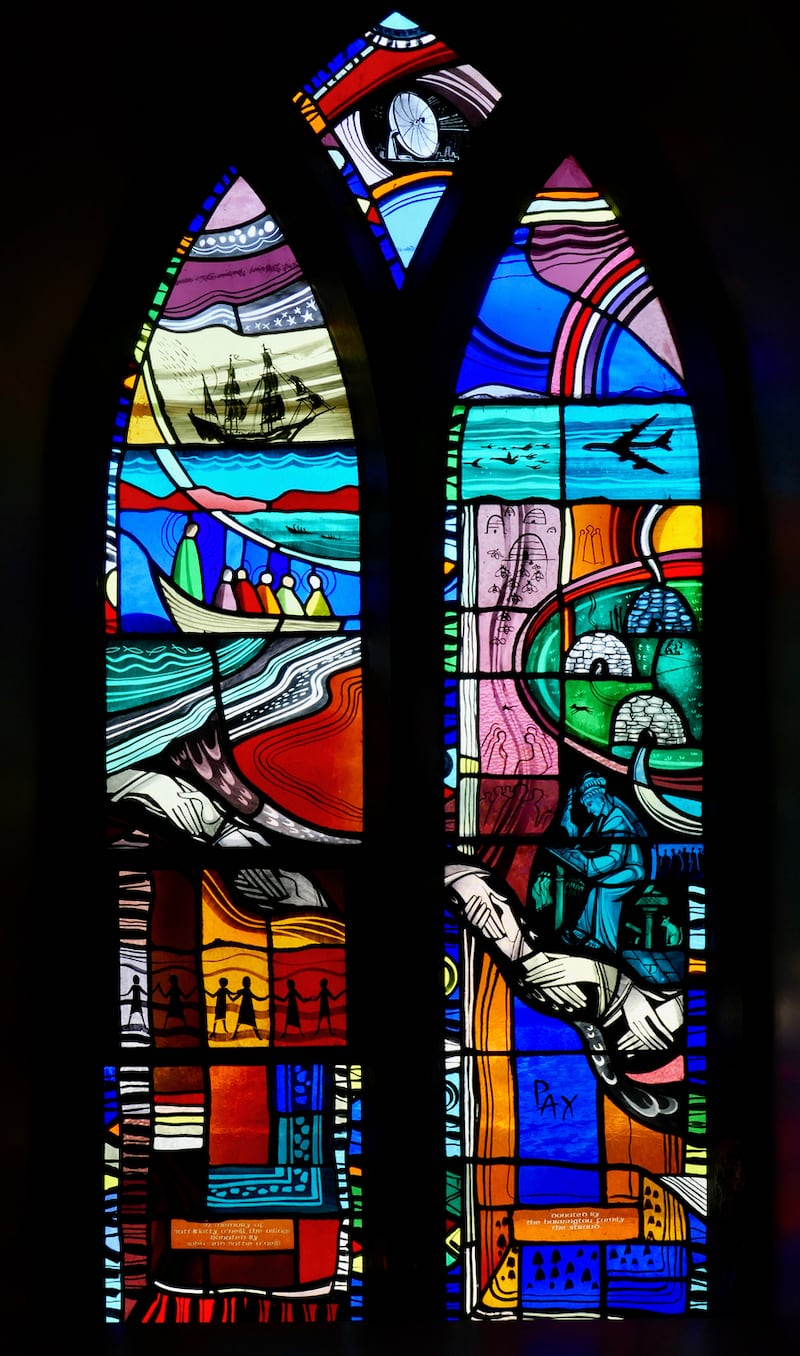In the mid-1980s the late Nicola Gordon Bowe, the leading authority on Harry Clarke, had the idea of creating a guide to where one could view stained glass windows by her hero Clarke and by the nine artists of the Dublin co-operative studio, An Túr Gloine (Tower of Glass), the leading lights of which were Wilhelmina Geddes, Evie Hone and Michael Healy.
The Gazetteer of Irish Stained Glass, as it was to be known, was compiled by Nicola, the late Michael Wynne, Assistant director of the National Gallery and pioneer of Irish stained glass research, and myself, with me being very much the junior partner in the enterprise.
From the outset Nicola’s idea was that it should be “portable” – definitely not a coffee-table book, tempting as that might be – but be of a size that could fit in a bag, a knapsack, or perhaps live semi-permanently in the car rather than high up on a dusty bookshelf. And so in 1988 the Irish Academic Press published the first edition of the Gazetteer of Irish Stained Glass.


Over three decades later I was surprised at how many people still spoke warmly of their well-worn copy and I thought perhaps now was the time for a second edition. Sadly both Nicola and Michael had passed on. However, when I approached the current publisher of the Irish Academic Press, Conor Graham, with the idea of a revised and expanded edition I received an enthusiastic response.
We decided to expand the book in two main directions: we would still use 1900 as the starting date – which essentially coincides with the beginning of the stained glass revival in Ireland – but we would bring it right up to date, including the best of contemporary artists working in the craft. We would also expand it to include all the most interesting artists who had worked in the field since the beginning of the 20th century, many of whom are now little known, and others who had achieved reputations of note as painters or sculptors but perhaps had only a small output in stained glass.
With the other two original compilers sadly deceased I looked to see who else might collaborate with me in this endeavour and drew up a list of eight individuals, all of whom had expertise in one or more of the artists. Also, from the outset I was hugely fortunate to have Jozef Vrtiel, a photographer who specialises in stained glass, on board as it was essential that the new edition would be full of top-rate images.
We sought additional advice from historians, practitioners and studio proprietors, and little by little accumulated lists of stained glass works in the public domain by various artists. We relied on studio archives when they existed though liaising with living artists was particularly rewarding. Likewise, descendants of several artists were very helpful in assisting us in compiling lists of windows by artists who had passed on.
We sought out windows where artistic merit, individual voice and excellence in the craft were the key criteria, though obviously there had to be an element of subjectivity in such a wide survey. When it came to the many fine windows created at the more prolific studios such as Earleys, Clarkes and Clokeys, all of which maintained a consistent “house style” and forbade the individual artists from signing their windows, we set out to include a selection of these studios’ best works and only ones when we knew which specific artist had been responsible.


As was the case in the original Gazetteer, and expressed by Nicola in her 1988 introduction, “by no means all the windows in this Gazetteer can be regarded as masterpieces”, we still feel that all the windows listed warranted inclusion. Ultimately we ended up increasing the number of entries from the original 800 plus to well over 2,500 entries.
Travelling around the country one began to observe certain trends. Windows created at both Clarkes and Earley studios tended to be found mostly in Catholic churches. By comparison, the Church of Ireland largely favoured An Túr Gloine and the Belfast company, Clokeys, the output of the latter studio being almost entirely found in Ulster.
In the earlier decades of the century most orders for stained glass were for a single window (often a memorial), whereas in the second half of the century, particularly post-Vatican II, architects commissioned stained glass for an entire church. This allowed artists such as Johnny Murphy of Murphy-Devitt Studios and George W Walsh to create a coherent vision for a space, sometimes combining both abstract and figurative glass to dramatic effect.
War and strife brought unexpected work for stained glass artists. Many Protestant churches throughout the island contain impressive stained glass windows erected in memory of young men who never returned from the Great War. In more recent times the Troubles took their toll, and while several churches lost fine windows in bombings, there are instances of entirely new “replacement” churches enhanced with complete schemes of stained glass by contemporary artists.
As one might expect, the counties with the largest concentration of populations usually held the greatest number of significant stained glass windows, Dublin excelling by a long stretch, but also counties Antrim, Cork, Galway and Limerick.
A few individual buildings stand out for particularly distinguished collections of stained glass: St Brendan’s Cathedral in Loughrea is filled with outstanding windows by An Túr Gloine artists spanning half a century; Galway Cathedral, regularly maligned for its chunky 1960s architecture, has a terrific collection of stained glass from the second half of the twentieth century, in particular showcasing the work of Patrick Pollen; and that jewel of Hiberno-Romanesque architecture in Cork, the Honan Chapel in the grounds of UCC, has some dazzling works by Harry Clarke such as his representation of St Gobnait in her role as patron saint of beekeeping.
Donegal is home to several iconic churches designed by Liam McCormick. His favourite stained glass artist was Helen Moloney and her intensely coloured windows often featuring creative variants of her favourite symbols can be found in several of these churches including in what was once voted Ireland’s Building of the Century, his circular church of St Aengus at Burt where she created a continual band of near-abstract glass on the theme of darkness into light.
Many rural parishes off the beaten track hold unexpected gems, such as the little church at Bridge a Crinn in north Louth which has an astonishing two-panel window made by Michael Healy in 1923, which depicts a seductive Judith with murderous intent and, in a separate panel above, an incredulous St Thomas gasping at Christ’s wound in a window erected to the memory of a local farmer and his wife, Thomas and Judith Treanor.
It is also worth noting that significant stained glass windows can be found on several off-shore islands: Richard King’s series of windows in the church on Inis Meáin; windows by Pollen and Beatrice Elvery in Tory Island’s little church (which photographer Jozef Vrtiel travelled by ferry to record); and William Dowling’s three-light window in Inishbofin’s church commemorating two young American students who drowned in the mid-1950s.
As we worked on compiling the Gazetteer we were somewhat surprised by the amount of windows by Irish artists which were commissioned for overseas locations, for literally all over the world and in some very unexpected places. A crematorium chapel near Wellington, New Zealand is home to six superb windows by Geddes, Healy and Hubert McGoldrick dating from 1914 to 1939. Irish missionaries commissioned windows for churches in India, Pakistan, Philippines and Nigeria. Among the last windows we added were two small ones made in Abbey Stained Glass Studios, Dublin in the 1970s by George W Walsh for the Ashkenazi Synagogue in Harare, Zimbabwe.

In addition to all the entries on individual windows the Gazetteer also contains the original introductory essay by Nicola Gordon Bowe, and a follow-on essay by myself which attempts to chart some trends in stained glass from mid-century to the present day, highlighting the achievements of the key practitioners. We also have included separate biographical notes on the main artists.
It is with sadness that the compilers have noticed the undeniable trend which has emerged in recent years, that of the high number of places built for religious worship which have shut their doors for a final time. Convent chapels in particular have been quietly closing with increasing regularity. A major challenge now and in the coming years will be how Ireland’s stained glass heritage can be preserved. We hope that the new edition of the Gazetteer will highlight the best of these treasures and will inform people where they can be discovered and appreciated, ultimately securing them for future generations.
[ info@iap.ie ]
















